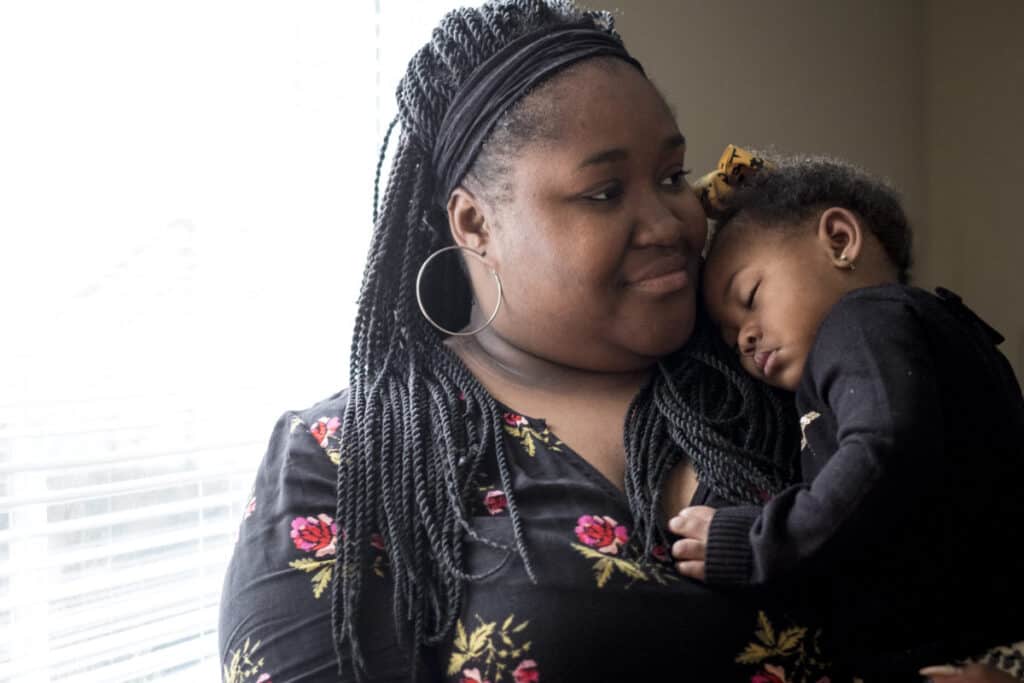We all know that teenagers are unique creatures and are going through lots of changes. They have new hormones, new social pressures, harder schoolwork, and are busy exploring their identities. Add to that a disability and a looming transition into a new and unknown situation…and it can be pretty overwhelming!
Your child will need your support and your unconditional love. They will also need to develop some skills to help them be independent and advocate for their own needs. So, part of your job in helping them get ready for the transition to adulthood is to teach your student self-advocacy skills.
We use “child” here, because for most of us, our child will always be “our child,” even when they are adults. But of course we mean our “young adult”.
What is self-advocacy?
When children are in elementary school, they are generally told what to do and when. The adults in their life take care of things like planning meals, making appointments with doctors or therapists, and managing their IEP and other services. If a child has a problem with school, friends, or health, their parents usually get involved and help manage the problem.
During high school, they should start to manage more of their own needs and make more decisions about their own life and future. Because when they are finished with school, they are expected to do a lot more for themselves, whether they are continuing their education, starting a job, or setting up a supported living situation.
This is why it’s important for parents and other caregivers to model and teach some of these life skills as a child becomes a teen, then an adult. As you cook a meal, make an appointment, or solve a personal squabble, explain what you’re doing. Then have your child do parts of the process while you watch and encourage. Have them take on more and more of the responsibility as they are able. This progression will help them learn how to do these things independently, and also help these tasks become habits.
The skills each child is able to learn may be different, but this modeling and teaching is important for every child, regardless of their disability.
Self-advocacy is more than taking care of yourself
Self-advocacy is the ability to direct the path of your own life. It’s your child being able to make their own goals on their IEP, speaking up if they’re not getting the services they need, and knowing how to get help when they need it.
Self-advocacy skills allow people to make their own decisions, take care of their own needs, and direct the course of their own life as much as possible. Many young adults with disabilities need extra help–and extra time–to build these skills. Building these skills ideally starts in childhood by giving them choices to make and decisions to be part of. As your child gets older, you can help them continually improve their awareness of their life choices and their involvement in their decisions.
Here are some important steps to teach self-advocacy
Encourage your child to be involved in their own transition planning
It’s helpful for teens to learn as much as they can about the road ahead, the resources available to them, and the decisions they’ll have to make. They should be part of the transition process as much as their disability allows. For example, if your child uses a communication device, add language to the device to help them understand and voice the choices and changes ahead.
Students with IEPs should be part of their own transition planning as soon as they are able, but at least by age 14-16. (IDEA requires this at age 16, and some states require it earlier.) They should attend the IEP meetings and be involved in decision-making about goals and services.
Involve your child as much as possible in the process
- Talk with them about their future goals, their challenges, and what kind of support they need to reach these goals
- Help them learn to articulate their needs and ask for support (If they have communication challenges, they can use the devices and techniques that work for them)
- Include them in all IEP and transition meetings if they are able to understand
- Encourage them to find activities to do outside of school that fit with their interests and can help them learn useful skills. Let them research work or volunteer opportunities
Help your child connect with role models and support systems
Self-advocacy is perhaps best learned from people who have experienced similar challenges or who share their disability. For example, a community of autistic adults and other teens can be an enormous benefit for an autistic high-schooler. A group like this can share their wisdom on how to stand up for their needs, direct their futures, and find acceptance. Role models can also help by showing young adults with disabilities positive examples of managing adult life despite the challenges. (Why does listening to autistic adults matter?)
How do you find support groups?
There are many groups to connect with online and in your community.
- Connect with support organizations and other parents. Ask them for suggestions
- Try this list from Bridges4Kids to find online communities
- Ask your local Parent Training and Information Center (PTIC) if they have peer-to-peer matching
- Search for the #ActuallyAutistic hashtag on social media
Share online transition tools with your child
Encourage your child to explore some of these tools that were made for teens with disabilities.
School Transitions:
- Youth Transition Toolkit: A guide for young people with disabilities transitioning into adulthood – Created for California but has lots of useful info for youth from any state
- Dude, Where’s My Transition Plan? – Written for students to help understand transition and plan for their future. Includes interactive checklists, quizzes, and places to write their own notes. 28 pages
- Adulting Shorts: The “TEA” on IEPs: part 1, part 2, and part 3 – Short comics to help students understand their IEP and transition planning
Healthcare Transitions:
- Smooth Moves Youth Health Transition – This interactive website helps young adults learn to manage their own healthcare
- Got Transition? – Has activities, quizzes, and checklists to help young adults prepare to take charge of their own health care
- Getting Ready for Youth Health Transition (HYT) – This short checklist helps teens get ready to take on more responsibility in managing their own care. (Made for Louisiana youth, but almost all applies to anyone)
- Health Transition Planning Fact Sheet – 2-page handout and checklist from Children’s Special Health Services (Made for Louisiana youth, but almost all applies to anyone)
Stay connected to your child
Keeping a good connection with your teenage child is so important, especially during this transition!
Why is it important to have a strong relationship with your teen?
A strong relationship with family members will help your child through the challenges of adolescence. It can also strengthen your role as a trusted ally for your child. This will be important as they move into adult life.
You can help your child learn important skills they’ll need as adults, like listening to instructions, expressing themselves, solving problems, and having positive social interactions.
Spending time together will help you both to build trust, support each other, and have fun!
Here’s what you can do:
- Do things together that your child enjoys
- Encourage them to communicate their needs and thoughts
- Make sure they know that you understand and support them unconditionally
- Keep in touch with what they’re doing in school and in the community
- Work on their transition planning as a team
Check out these 3 tips for communicating with your young adult.
It’s not easy to teach self-advocacy to your student with disabilities, but it’s worth the effort. A young adult who can help direct their own transition to adult life will have a better chance of living life the way they want to. The best thing parents can do along the way is encourage your child to make as many of their own decisions as possible as they grow, and to involve them in their transition planning.
Learn more about self-advocacy:
- Self-Advocacy for Young Adults: Overcoming Fears – 2-minute video
- Storytelling as a self-advocacy skills for teens with disabilities – 2-minute video
- Life after the IEP: How do I help my child with a disability transition to adulthood? – Blog
- Tips to help youth with disabilities learn independent living skills – Blog
- Toolbox of resources to build self-determination skills
- Best Practices in Self-Advocacy Skill Building – resources from Parent Center Hub



